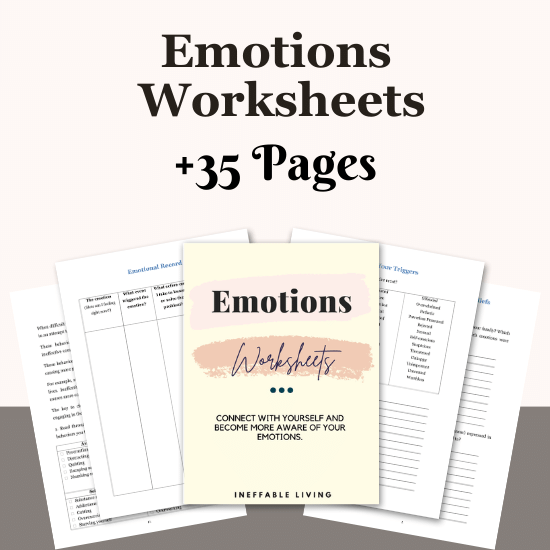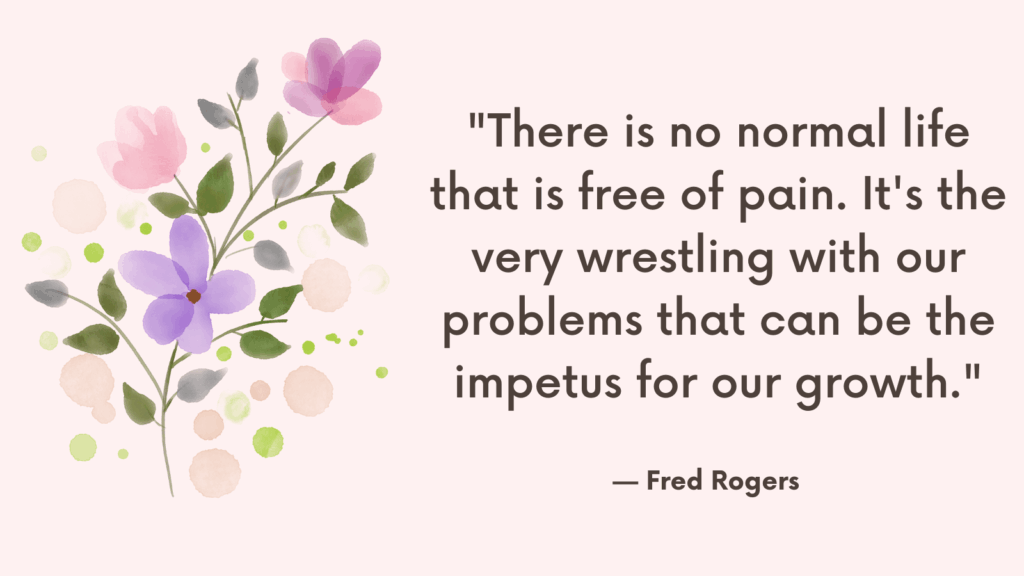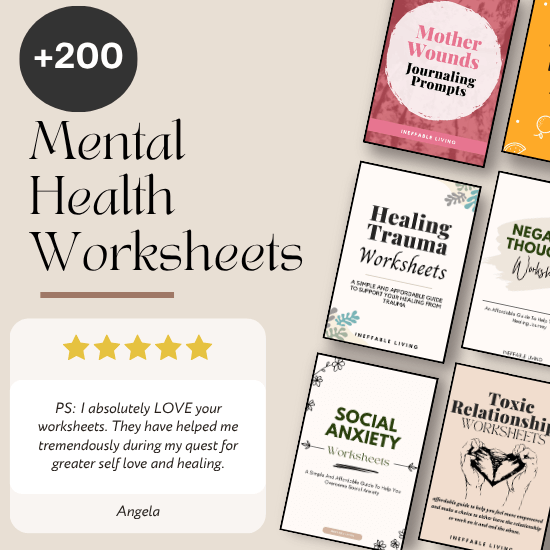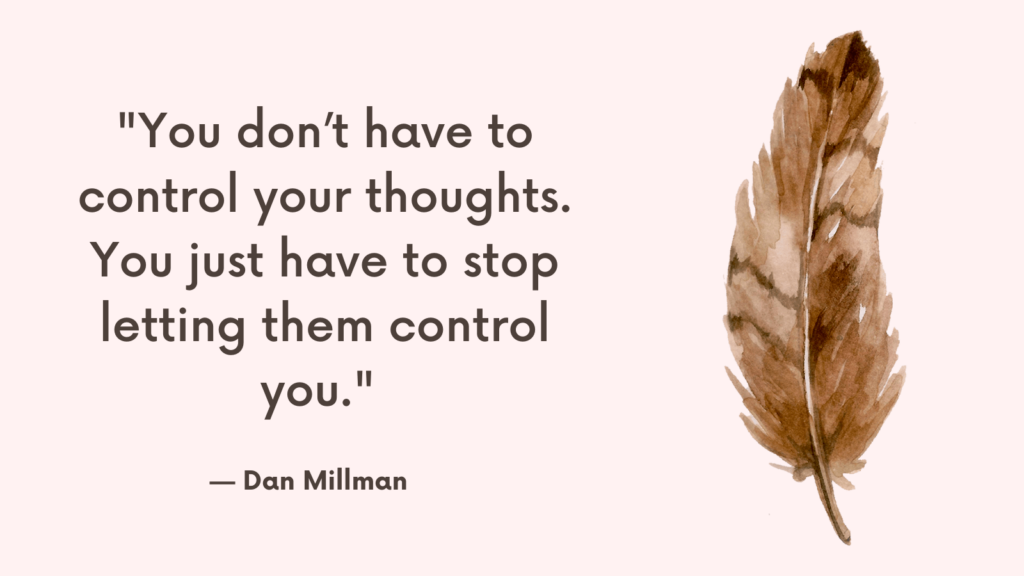Uncomfortable emotions like anger, shame, fear, or grief can be overwhelming. But avoiding or suppressing them often intensifies the pain. Learning to sit with these emotions helps you build resilience, insight, and emotional strength. Here’s how to do it in a practical, grounded way.
The Difference Between Avoiding and Allowing
Many people confuse avoiding emotions with managing them — but true emotional health comes from allowing your feelings, not pushing them away. Understanding the difference between avoiding and allowing helps you process emotions in a healthier, more compassionate way.
1. Avoiding Means Suppressing or Escaping
Avoiding emotions looks like stuffing them down, ignoring them, or distracting yourself so you don’t have to feel discomfort. This might include overworking, numbing with substances, or pretending you’re “fine.”
2. Allowing Means Acknowledging and Sitting With Feelings
Allowing emotions means noticing what you feel and giving yourself permission to experience it, without judgment or rushing to change it.
3. Avoiding Creates More Emotional Build-Up
When you avoid emotions, they don’t go away — they build up under the surface, often returning stronger or spilling out in unexpected ways like irritability, anxiety, or exhaustion.
4. Allowing Lets Emotions Move Through
By allowing feelings, you give them space to rise, peak, and pass. Emotions are temporary; they flow more easily when you face them with openness.
5. Avoiding Feels Like Tension and Resistance
Avoidance often creates a tight, restless, or bottled-up feeling inside, because you’re using energy to push emotions away.
6. Allowing Feels Like Softening and Acceptance
Allowing feels more spacious — like loosening a tight grip — even if the emotion itself is uncomfortable. It’s a posture of “I can sit with this” rather than “I must get rid of this.”
7. Avoiding Delays Healing
When you avoid emotions, the underlying issues stay unresolved, keeping you stuck in repeating patterns.
8. Allowing Opens the Door to Healing
Allowing gives you access to the wisdom underneath your feelings, helping you understand your needs, process pain, and move forward.
9. Avoiding Often Feels Automatic and Unconscious
You may avoid without realizing it — through constant busyness, distraction, or shutting down emotionally — because it feels safer or more familiar.
10. Allowing Is a Conscious, Courageous Choice
Allowing takes intention. It means pausing, turning inward, and gently inviting your emotions to be seen, even when it feels vulnerable.
How to Sit with Uncomfortable Emotions?
1. Name the Emotion Clearly
Label what you’re feeling without trying to soften it. Say to yourself, “I feel disappointed,” “I feel hurt,” or “I feel scared.” Naming an emotion reduces its intensity and gives it shape.
2. Acknowledge That It’s Okay to Feel This Way
Tell yourself, “It’s human to feel this,” or “This emotion makes sense.” This step reduces shame and judgment, making space for acceptance.
3. Notice Where It Shows Up in Your Body
Scan your body. Is your chest tight? Is your jaw clenched? Are your shoulders tense? Identifying physical sensations helps you ground the emotion in the present moment.
Related: 12 Ways to Express Emotions Clearly & Effectively
4. Pause Instead of Reacting
Take a few deep breaths. Let the emotion be there without immediately reacting, distracting, or fixing it. Give yourself permission to simply be with it.
5. Stay Curious, Not Critical
Ask gentle questions like “What triggered this?” or “What is this emotion asking of me?” Let the emotion speak without shutting it down or trying to explain it away.
6. Use the 90-Second Rule
Emotions often surge for 90 seconds. If you can stay present and not engage the mental story, the physical intensity usually passes on its own.
Related: How To Feel Your Feelings? Top 9 Difficult Emotions To Cope With In Healthy Ways
7. Choose a Safe Space for Processing
Sit quietly, go for a walk, lie down, or create art. Give yourself a setting where the emotion can move through you without interruption.
8. Don’t Force a Lesson or Silver Lining
Resist the urge to turn discomfort into instant wisdom. Sometimes the only takeaway is “I survived this feeling.” That’s enough.
9. Speak Kindly to Yourself
Use phrases like “I’m here with you,” “This is hard, but I’m staying,” or “I don’t need to solve this right now.” Kind self-talk helps soothe the nervous system.
Related: How to Overcome Emotional Reasoning & Become Less Emotionally Reactive?
10. Let the Emotion Complete Its Cycle
Emotions have a beginning, middle, and end. When you sit with them without pushing them away, they naturally rise and fall.
11. Use Movement if Needed
If stillness feels too overwhelming, try gentle movement like stretching, walking, or shaking out your hands. This can help release tension.
12. Set a Timer for Contained Processing
If an emotion feels too big, set a timer for 5 or 10 minutes. Commit to staying with it for that time. When the timer ends, you can choose to take a break.
Related: How to Identify Your Emotions?
13. Journal the Unfiltered Truth
Write down exactly what you’re feeling, even if it’s messy or intense. Don’t censor or explain. Let the page hold your emotional honesty.
14. Reach Out to a Supportive Person
Share your experience with someone who can listen without trying to fix it. Sometimes being witnessed is what helps the emotion move.
15. Recognize That This is a Skill
Sitting with emotions takes practice. Be patient with yourself as you learn to stay present with discomfort without running away from it.
Related: 2-Minute Technique to Help You Manage Feelings Of Overwhelm

How to Recognize When You’re Emotionally Avoiding?
1. You Stay Constantly Busy or Distracted
You pack your schedule, multitask endlessly, or fill every quiet moment with entertainment or chores to avoid sitting with your feelings.
2. You Downplay or Dismiss Your Emotions
You tell yourself “It’s not a big deal,” “I shouldn’t feel this way,” or “Other people have it worse,” even when you’re struggling internally.
3. You Avoid Certain People or Situations
You steer clear of people, places, or conversations that might stir up difficult emotions, even if they’re important for your growth or healing.
4. You Numb Out With Coping Behaviors
You turn to food, alcohol, social media, gaming, or other distractions to block out discomfort instead of confronting what’s underneath.
5. You Feel Restless or On Edge During Stillness
When you finally slow down or sit quietly, you feel anxious, agitated, or uncomfortable — because feelings start to surface.
6. You Intellectualize or Overthink Your Emotions
Instead of feeling your emotions, you analyze them endlessly or explain them away, staying in your head rather than your heart.
7. You Shut Down or Go Emotionally Numb
You disconnect from your feelings, relationships, or even your body, feeling detached or like you’re “just going through the motions.”
8. You Delay or Avoid Making Decisions
You put off choices because they would require facing your true desires, fears, or the risk of disappointment.
9. You React Impulsively to Avoid Feeling
You lash out, withdraw, or make sudden decisions to dodge emotional discomfort rather than pausing and reflecting.
10. You Keep Telling Yourself “I’ll Deal With This Later”
You repeatedly promise yourself you’ll process your emotions later — but later never comes, and the feelings stay buried.
What to Do If It Feels Overwhelming?
When life, emotions, or stress feel overwhelming, it can seem like you’re drowning without a way out. But even small, intentional steps can help you regain a sense of steadiness. You don’t have to fix everything at once — you just need to focus on grounding yourself, one moment at a time.
1. Pause and Take a Deep Breath
Before doing anything else, stop and breathe slowly. Even one or two deep, intentional breaths can help interrupt the spiral of panic or racing thoughts.
2. Focus on One Small, Controllable Step
Instead of trying to tackle everything, ask yourself: “What is one small thing I can do right now?” It might be drinking water, tidying one corner, or sending one email.
3. Ground Yourself in the Present Moment
Use grounding techniques like naming five things you see, touching a textured object, or feeling your feet on the floor to reconnect with your body and surroundings.
4. Break Tasks Into Tiny Pieces
If you’re facing a big task, divide it into the tiniest possible steps — even just opening your notebook or making a list counts as progress.
5. Remind Yourself That Emotions Are Temporary
Tell yourself gently: “This feeling will pass.” Emotions are like waves — they rise, peak, and eventually fall. You won’t feel this way forever.
6. Reach Out for Connection
Call, text, or sit with someone you trust, even if you don’t know what to say. You don’t have to handle everything alone.
7. Lower the Bar for Productivity
When you’re overwhelmed, aim for good enough, not perfect. Small, imperfect actions are better than freezing or spiraling into shame.
8. Give Yourself Permission to Rest
Sometimes, the most productive choice is to pause, breathe, or take a short break. Rest isn’t weakness — it’s how you restore your capacity.
9. Use Simple Self-Talk to Soothe Yourself
Repeat calming phrases like “I am safe right now,” “I can handle this one step at a time,” or “It’s okay to feel overwhelmed — I’m still moving forward.”
10. Seek Professional or Crisis Support If Needed
If the overwhelm becomes too heavy to carry, reach out to a therapist, counselor, or crisis line. Getting help is not a failure — it’s an act of courage and self-respect.
Conclusion
You don’t have to like your emotions. You just have to let them exist. That’s how they pass through instead of taking root.



